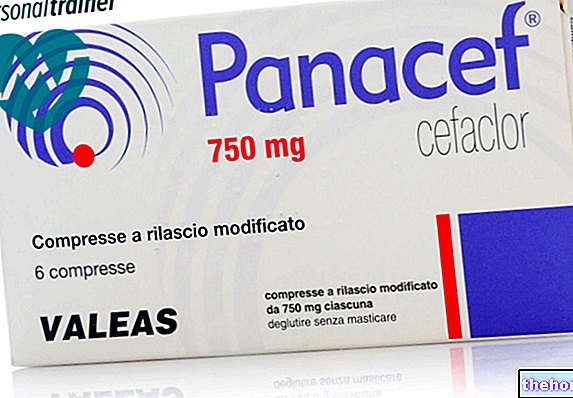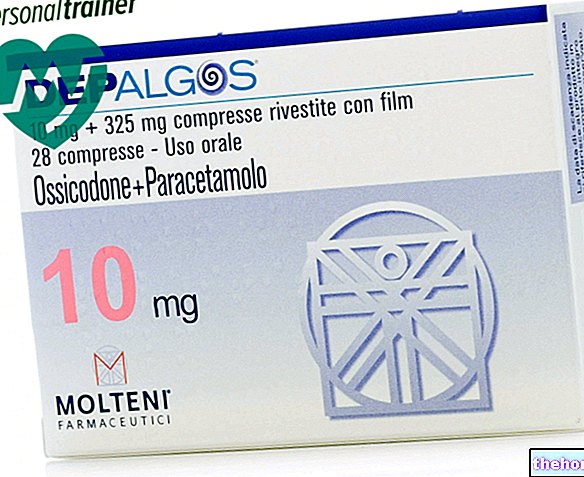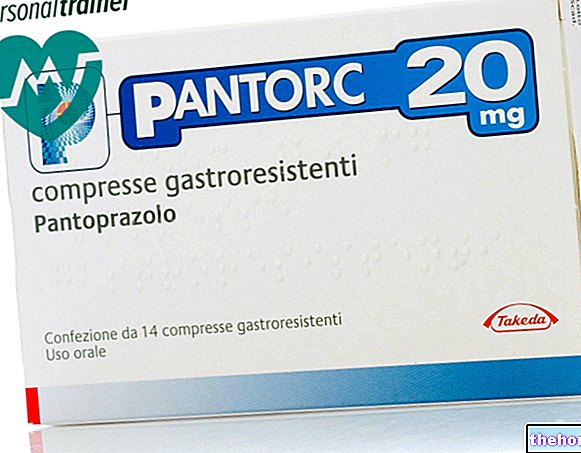Active ingredients: Chlorchinaldol, Diflucortolone
IMPETEX 1% + 0.1% CREAM
Indications Why is Impetex used? What is it for?
Pharmacotherapeutic group
Corticosteroids for cutaneous use, associated with antiseptics. Indications All skin affections, both inflammatory and allergic, accompanied by bacterial, fungal or mixed infections, in which local corticotherapy is indicated. Skin affections with bacterial and / or fungal complications: nummular eczema, eczema and contact dermatitis, eczema vulgaris (acute and chronic phase), seborrheic eczema, varicose eczema (not directly on the ulcer), eczema of children, anal eczema, dyshidrosis and dyshidrosis eczema, psoriasis, microbides, eczematis.
Bacterial infections with intense inflammatory component: pyoderma, folliculitis, impetigo.
Dermatomycosis caused by dermatophytes, yeasts and levulo-like fungi, accompanied by acute inflammation or with the clinical picture dominated by secondary eczematization (tinea, candidiasis, pityriasis versicolor).
Impetex is also indicated to prevent bacterial and / or fungal infections in skin diseases of an inflammatory or allergic nature.
Contraindications When Impetex should not be used
Hypersensitivity to the active substances or to any of the excipients.
Tuberculous and viral infections of the skin to be treated (herpes, chicken pox, etc.), acne rosacea, skin ulcers.
The preparation is contraindicated for ophthalmic use.
Precautions for use What you need to know before taking Impetex
The use, especially if prolonged, of products for topical use can give rise to sensitization phenomena. In this case it is necessary to interrupt the treatment and institute an adequate therapy.
Interactions What medications or foods can change the effect of Impetex
Tell your doctor or pharmacist if you have recently taken any other medicines, even those without a prescription.
There are no known possible drug interactions and incompatibilities.
Warnings It is important to know that:
Percutaneous application of corticosteroids in the treatment of extensive dermatoses and / or for long periods of time can determine secondary phenomena of systemic absorption (Cushing's syndrome, inhibition of the hypothalamus-pituitary axis). This occurrence is more frequent in children and in the case of an occlusive bandage. In infants and children under 4 years of age, it is recommended not to continue the therapy beyond 3 weeks, particularly if the areas to be treated are covered with diapers or plastic panties, as the skin folds and the diaper can act as a bandage. occlusive. In the treatment of chronic diseases that require prolonged therapies, if a favorable therapeutic effect has been achieved, it will be advisable to reduce the dosage and frequency of applications to the minimum necessary to control symptoms and avoid relapses, suspending the use of the preparation as soon as possible.
During the therapy it is necessary to monitor the patient's condition, in order to detect early signs and symptoms of steroid excess (asthenia, hypertension, electrolyte disturbances, etc.). In all cases it is advisable to limit the use of topical steroids to short periods of time. The use, especially if prolonged, of topical products can give rise to sensitization phenomena. In this case it is necessary to interrupt the treatment and institute an adequate therapy.
Prolonged use of the product can favor the development of microorganisms that are not sensitive to the chemotherapeutic agent present in the preparation itself. In this case, appropriate therapeutic measures must be taken. In case of application to the face, avoid that the preparation comes into contact with the eyes. "use, especially if prolonged, of products for topical use can give rise to sensitization phenomena. In this case, treatment must be interrupted and appropriate therapy instituted.
Pregnancy and breastfeeding
Ask your doctor or pharmacist for advice before taking any medicine.
Local application of corticosteroids to pregnant laboratory animals can induce the appearance of fetal malformations.
The transferability of this find to the human species is not proven. However, in the first 3 months of pregnancy topical corticosteroid preparations should not be used in high quantities or for a long time and generally in pregnant women and in very early childhood the preparation should only be used in case of real need and under direct supervision. doctor's check.
Excipients warnings:
This medicine contains stearyl alcohol, which can cause local skin reactions (e.g. contact dermatitis).
Dose, Method and Time of Administration How to use Impetex: Posology
Due to its particular excipient ("oil in water" emulsion, low fat) Impetex is particularly indicated in the treatment of secreting lesions and in moist skin areas, such as the anal region and the axillary cavity, where it is advisable to use a base with a high water content. . Impetex allows the secretion to flow and induces rapid evaporation and drying of the skin. The preparation leaves no trace of grease on the skin and is therefore also suitable for application on the face and uncovered skin regions.
Unless otherwise prescribed, start the treatment by spreading the preparation in a thin layer 2-3 times a day. As soon as the clinical picture has improved, only one daily application is sufficient.
Infants and children under the age of 4 should not be treated for longer than three weeks, especially in areas covered with nappies.
Overdose What to do if you have taken too much Impetex
There are no known cases of overdose
Side Effects What are the side effects of Impetex
Local redness, edema, peeling, itching as signs of hypersensitivity to the product.
Other effects include hypertrichosis, acneiform eruption, skin atrophy, hypopigmentation, telangiectasias, striae, vascular fragility, purpura and, after prolonged treatments (especially on the face), rebound pustular dermatitis which, being sensitive to steroids, become evident only at the time of discontinuation of therapy. Prolonged use and / or high doses can induce an excess syndrome with arterial hypertension, asthenia, adynamia, heart rhythm disturbances, hypokalaemia and metabolic alkalosis.
In occlusive treatments, it should be borne in mind that the films used for the bandage can themselves be causes of sensitization phenomena.
Hypersensitivity reactions may occur in predisposed subjects.
It is advisable to consult your doctor or pharmacist in case of unwanted effects not mentioned in this leaflet.
Expiry and Retention
Expiry: See the expiry date printed on the package
The expiry date refers to the product in intact packaging, correctly stored
. Warning: Do not use the medicine after the expiry date stated on the package.
Medicines should not be disposed of via wastewater or household waste. Ask your pharmacist how to throw away medicines you no longer use. This will help protect the environment.
KEEP THE MEDICINAL PRODUCT OUT OF THE REACH AND SIGHT OF CHILDREN
Composition
100 g of cream contain: 1 g chlorchinaldol; diflucortolone valerate 0.1 g.
Excipients: polyethylene glycol monostearate, stearyl alcohol, liquid paraffin, white petroleum jelly, sodium edetate, carbomer, sodium hydroxide, purified water.
Pharmaceutical form and content
Cream, 30 g tube.
Source Package Leaflet: AIFA (Italian Medicines Agency). Content published in January 2016. The information present may not be up-to-date.
To have access to the most up-to-date version, it is advisable to access the AIFA (Italian Medicines Agency) website. Disclaimer and useful information.
01.0 NAME OF THE MEDICINAL PRODUCT
IMPETEX 1% + 0.1% CREAM
02.0 QUALITATIVE AND QUANTITATIVE COMPOSITION
100 g of cream contain:
Active ingredients: chlorchinaldol 1 g, diflucortolone valerate 0.1 g.
Excipients: Stearyl alcohol.
For the full list of excipients, see section 6.1.
03.0 PHARMACEUTICAL FORM
Cream.
04.0 CLINICAL INFORMATION
04.1 Therapeutic indications
All skin affections, both inflammatory and allergic in nature, accompanied by bacterial, fungal or mixed infections, in which local corticotherapy is indicated.
Skin affections with bacterial and / or fungal complications: nummular eczema, eczema and contact dermatitis, eczema vulgaris (acute and chronic phase), seborrheic eczema, varicose eczema (not directly on the ulcer), eczema of children, anal eczema, dyshidrosis and dyshidrosis eczema, psoriasis, microbides, eczematis. Bacterial infections with intense inflammatory component: pyoderma, folliculitis, impetigo. Dermatomycosis caused by dermatophytes, yeasts and levulo-like fungi, accompanied by acute inflammation or with the clinical picture dominated by secondary eczematization (tinea, candidiasis, pityriasis versicolor) Impetex is also indicated to prevent bacterial and / or fungal infections in skin diseases of an inflammatory or allergic nature.
04.2 Posology and method of administration
Due to its particular excipient ("oil in water" emulsion, low fat) Impetex is particularly indicated in the treatment of secreting lesions and in moist skin areas, such as the anal region and the axillary cavity, where it is advisable to use a base with a high water content. . Impetex allows the secretion to flow and induces rapid evaporation and drying of the skin. The preparation leaves no trace of grease on the skin and is therefore also suitable for application on the face and uncovered skin regions.
Unless otherwise prescribed, start the treatment by spreading the preparation in a thin layer 2-3 times a day. As soon as the clinical picture has improved, only one daily application is sufficient.
Infants and children under 4 years of age should be treated for periods of time not exceeding 3 weeks, especially when applying to regions covered by diapers.
04.3 Contraindications
Hypersensitivity to the active substances or to any of the excipients.
Tuberculous and viral infections of the skin to be treated (herpes, chicken pox, etc.).
Acne rosacea.
Skin ulcers.
The preparation is contraindicated for ophthalmic use.
04.4 Special warnings and appropriate precautions for use
The cutaneous application of corticosteroids in the treatment of extensive dermatoses and / or for long periods of time, can determine secondary phenomena of systemic absorption (Cushing's syndrome, inhibition of the hypothalamic-pituitary axis). This occurrence is more frequent in children and in the case of occlusive dressing. In infants and children under 4 years of age, it is recommended not to continue the therapy beyond 3 weeks, particularly if the areas to be treated are covered with diapers or plastic panties as the skin folds and the diaper can act as an occlusive bandage. .
In the treatment of chronic diseases that require prolonged therapies, if a favorable therapeutic effect has been achieved, it will be advisable to reduce the dosage and frequency of applications to the minimum necessary to control symptoms and avoid relapses, suspending the use of the preparation as soon as possible.
During the therapy it is necessary to monitor the patient's condition, in order to detect early signs and symptoms of steroid excess (asthenia, hypertension, electrolyte disturbances, etc.).
In all cases it is advisable to limit the use of topical steroids to short periods of time.
Prolonged use of the product can favor the development of microorganisms that are not sensitive to the chemotherapeutic agent present in the preparation itself. In this case, appropriate therapeutic measures must be adopted.
In case of application to the face, avoid that the preparation comes into contact with the eyes. The use, especially if prolonged, of products for topical use can give rise to sensitization phenomena. In this case it is necessary to interrupt the treatment and institute an adequate therapy.
Medicines should not be kept within reach of children.
Excipients warnings:
This medicine contains stearyl alcohol, which can cause local skin reactions (e.g. contact dermatitis).
04.5 Interactions with other medicinal products and other forms of interaction
There are no known possible drug interactions.
04.6 Pregnancy and lactation
Local application of corticosteroids to pregnant laboratory animals may induce the appearance of fetal malformations. The transferability of this finding to humans has not been demonstrated.
However, in the first three months of pregnancy topical corticosteroid preparations should not be used in high quantities or for a long time and generally in pregnant women and in very early childhood the preparation should be used only in case of real need and under the direct doctor's check.
04.7 Effects on ability to drive and use machines
Impetex does not affect the ability to drive or use machines.
04.8 Undesirable effects
Locally redness, edema, peeling, itching as signs of hypersensitivity to the product. Other effects include hypertrichosis, acneiform eruptions, skin atrophy, hypopigmentation, telangiectasias, striae, vascular fragility, purpura and after prolonged treatments (especially on the face) rebound pustular dermatitis which, being sensitive to steroids, become evident only upon discontinuation of the therapy. Prolonged and / or high dose use can induce an excess syndrome with arterial hypertension, asthenia, adynamia, heart rhythm disturbances, hypokalaemia and metabolic alkalosis.
In occlusive treatments it should be borne in mind that the films used for the bandage can themselves cause sensitization phenomena.
The use, especially if prolonged of the products for topical use, can give rise to sensitization phenomena. In this case it is necessary to interrupt the treatment and institute an adequate therapy.
Hypersensitivity reactions may occur in predisposed subjects.
04.9 Overdose
There are no known cases of overdose.
05.0 PHARMACOLOGICAL PROPERTIES
05.1 Pharmacodynamic properties
Pharmacotherapeutic group: corticosteroid, combination with antiseptic.
ATC code: D07BC04.
Impetex cream contains a topical corticosteroid, diflucortolone valerianate (DFV) at a concentration of 0.1% and an antimicrobial, chlorchinaldol (CCD) at a concentration of 1%.
DFV is a corticosteroid for topical application, with an anti-inflammatory, antipruritic and vasoconstrictive action. Corticosteroids reduce inflammation with different mechanisms, especially by promoting the synthesis of a factor (lipocortin) which keeps the enzyme (phospholipase A2) under control, which activates the arachidonic acid cascade, leading to the formation of phlogogenic factors, such as prostaglandins and lipoperoxides .
DFV exhibits 3 to 30 times higher anti-inflammatory activity than other comparator topical corticosteroids and 10 times higher antiproliferative activity than flucortolone.
The CCD has antibacterial and antifungal activity which in vitro is carried out on Gram positive bacteria, on the main Gram negative bacteria, as well as on dermatophytes and yeasts. This inhibitory effect on the growth of microorganisms was confirmed on human skin by means of the occlusive dressing test according to Marples and Kligman. The application, even repeated, of the CCD does not favor the selection of resistant bacterial strains.
05.2 "Pharmacokinetic properties
Applied to the skin, corticosteroids are largely retained by the stratum corneum and only a small part reach the dermis where they can be absorbed. Numerous factors can favor a more evident absorption: the area and the extension of the skin to be treated, the type of lesion, the duration of the treatment, the possible occlusive bandage. In this regard, it should be borne in mind that certain areas of the skin (face, eyelids, hair, scrotum) absorb them more easily than others (skin of the knees, elbows, palm of the hand and soles of the feet). DFV rapidly penetrates the human epidermis, reaching its maximum concentration within 4 hours of application.
This concentration is prevalent in the more superficial skin layers. Systemic absorption, after 7 hours of application, is less than 1% of the initial dose. The small amount absorbed into the circulation is rapidly metabolized (plasma half-life of about 4 hours) to at least three degrading substances which are rapidly and completely eliminated by the kidney in conjugated form.
7 metabolites of DFV have been identified in urine.
The intracutaneous metabolism of DFV, after application on human skin, consists in a slow hydrolysis of the substance to diflucortolone and valeric acid (5-15% of the dose applied for 7 hours).
Investigations conducted in vitro and in vivo, after skin application of various preparations containing CCD labeled with 14C in healthy volunteers, have shown that only a modest amount of active ingredient is absorbed: 5-15% in 24 hours and in different conditions. After the cutaneous application of 25 g of a preparation containing 1% CCD, the absorbed quantity varies from 10 to 35 mg in 24 hours.
Researches conducted with DFV and CCD have shown that the presence of the CCD does not modify the absorption of the steroid and that the latter does not negatively interfere with the antibacterial action of the CCD.
05.3 Preclinical safety data
The acute toxicity of DFV is negligible (LD50 per os in mice> 4 g / kg). Tests carried out with topical applications in concentrations equal to 0.5% have confirmed the absence of a determinable acute toxicity. Only after prolonged applications in dogs for 14 weeks of preparations at 0.1% at a dose of 100 mg / kg / day yes systemic effects are manifested.
Acute CCD toxicity was evaluated in mice (LD50 orally 0.6-0.8 g / kg), rat (LD50 2.9 g / kg) and dog (LD50 1 g / kg).
Dermal application of doses of 2.5 g / kg of a 10% preparation for ten days in rats and thirteen days in rabbits did not cause the appearance of noteworthy toxic effects.
The acute toxicity of DFV + CCD was evaluated in the rat (LD50 orally> 35.9 g / kg). The continued application for thirteen weeks in the dog caused the appearance of systemic effects only for doses higher than 500 mg / kg / day.
Embryotoxic effects appeared in rabbits and rats only for doses higher than 50 mg / kg / day applied to the skin, during the organogenesis phase, for more than ten days.
06.0 PHARMACEUTICAL INFORMATION
06.1 Excipients
Polyethylene glycol monostearate, stearyl alcohol, liquid paraffin, white petroleum jelly, sodium edetate, carbomer, sodium hydroxide, purified water.
06.2 Incompatibility
No specific incompatibilities are known to date.
06.3 Period of validity
4 years.
06.4 Special precautions for storage
This medicinal product does not require any special storage conditions.
06.5 Nature of the immediate packaging and contents of the package
Flexible aluminum tube internally protected by lacquer and closed with a plastic screw cap, contained in a cardboard box, together with the package leaflet.
06.6 Instructions for use and handling
No special instructions.
07.0 MARKETING AUTHORIZATION HOLDER
Teofarma S.r.l. - Via F.lli Cervi, 8 - 27010 Valle Salimbene (PV)
08.0 MARKETING AUTHORIZATION NUMBER
Impetex 1% + 0.1% AIC cream n ° 024383022
09.0 DATE OF FIRST AUTHORIZATION OR RENEWAL OF THE AUTHORIZATION
22/04/1981 / June 2010
10.0 DATE OF REVISION OF THE TEXT
AIFA resolution of 28 January 2013




























